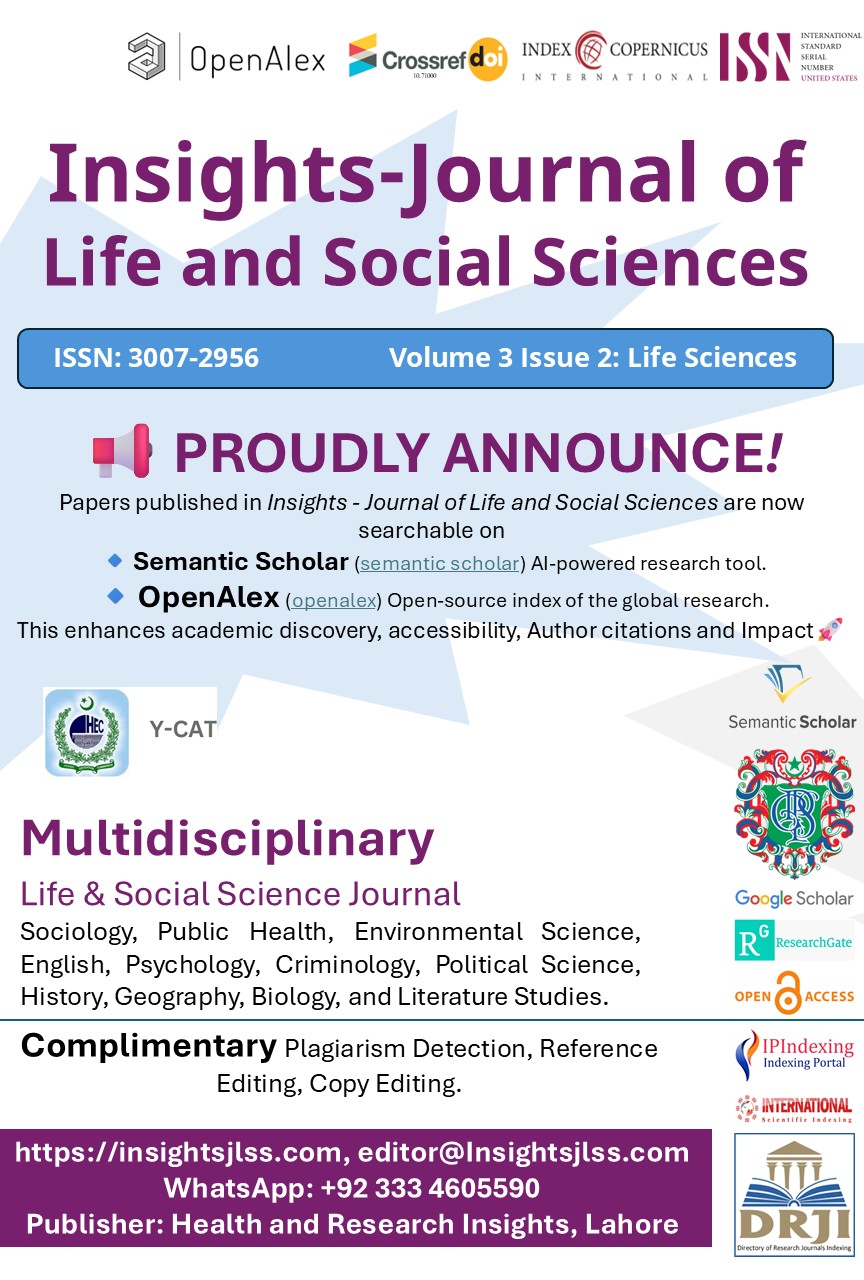COMPARATIVE ANALYSIS OF DIGESTIVE ENZYME ACTIVITY IN LABEO ROHITA, CIRRHINUS MRIGALA, AND C. CATLA: FARMED VS. WILD CONDITIONS
Main Article Content
Abstract
Background: Digestive enzyme activity plays a crucial role in nutrient assimilation and overall growth in fish. Differences in environmental conditions, diet composition, and feeding strategies significantly influence enzymatic function. Farmed fish often receive formulated diets, while wild fish consume natural feed, which may impact their digestive efficiency. Understanding variations in digestive enzyme activity between farmed and wild fish species can provide insights into metabolic adaptations and contribute to optimizing feeding strategies in aquaculture. This study aimed to evaluate the relationship between digestive enzyme activity and gut morphometric parameters in Labeo rohita, Cirrhinus mrigala, and Catla catla from farmed and wild environments.
Objective: To compare digestive enzyme concentrations (amylase, lipase, and protease) between farmed and wild populations of L. rohita, C. mrigala, and C. catla and assess their correlation with gut morphometry.
Methods: A total of 90 fish specimens (30 per species) were collected from the Al-Raheem Fish Hatchery (farmed) and River Chenab (wild). Body weight, total length, gut weight, gut length, relative gut mass, relative gut length, and Zihler’s index were measured. Gut enzyme activity was analyzed using spectrophotometric methods for amylase, lipase, and protease concentrations. Statistical analyses, including Pearson’s correlation and ANOVA, were performed to determine significant differences between farmed and wild fish.
Results: Wild L. rohita exhibited higher amylase activity (21.6 IU/ml) compared to farmed individuals (17.9 IU/ml). Similar trends were observed in C. catla (wild: 12.9 IU/ml; farmed: 9.9 IU/ml) and C. mrigala (wild: 6.2 IU/ml; farmed: 12.5 IU/ml). Lipase activity was highest in wild C. mrigala (14.6 IU/ml) compared to farmed specimens (5.4 IU/ml). Protease concentrations were higher in wild L. rohita (0.3 IU/ml) than in farmed individuals (0.2 IU/ml). Statistical analysis showed no significant difference in enzyme activity between farmed and wild fish (p > 0.05).
Conclusion: Wild fish demonstrated higher digestive enzyme activity than farmed fish, suggesting that environmental factors influence metabolic efficiency. Gut morphometric parameters correlated with enzyme activity, reinforcing the role of anatomical adaptations in digestion. These findings contribute to refining feeding strategies in aquaculture to optimize nutrient absorption and improve fish growth.
Article Details

This work is licensed under a Creative Commons Attribution-NonCommercial-NoDerivatives 4.0 International License.
